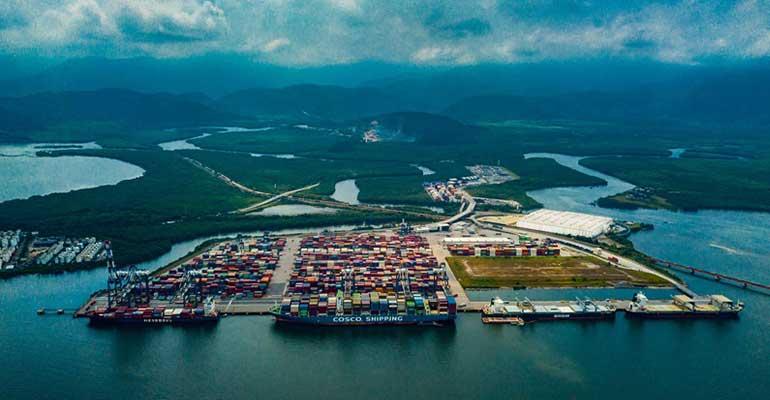DP World will invest $200 million in expansion and modernisation projects in the port of Santos to increase annual throughput to 1.4 million teus up from current 1.2 million teus and extending the quay area to 1,290 metres up from 1,100 metres. The completion of the project is projected for 2024.
“In Brazil, we have many accomplishments to celebrate after a decade of operations. We recently announced a new expansion that reflects the Port of Santos’ position as an important transport and logistics artery in the region,” says Fabio Siccherino, CEO of DP World.
The Santos terminal began operations in 2013 with container and general cargo handling on a 653-metre quay with a capacity of 1.2 million teus. In 2020, a pulp-handling complex for Suzano was inaugurated and the quay was extended to 1,100 metres. A 35,000-square-metre warehouse was built, integrated with a 4,000-metre railway yard.
In the last ten years, DP World Santos has handled over 5,200 vessels, more than 7.4 million teus, over 9.5 million tonnes of pulp bales, over 123,000 teus of cross-docking cargoes, and over 4 million gate transactions.
And DP World’s terminal in Santos has embarked on equipment electrification for its RTGs (Rubber-Tired Gantry Cranes). The project entails the adaptation of 22 diesel-operated cranes, with five slated for conversion this year and the remainder by 2024.
This shift is expected to slash the terminal’s diesel consumption by up to 60%. Notably, the terminal has already incorporated renewable energy for newly acquired equipment.
“All of this is part of the decarbonisation project,” said Siccherino.
Copyright © 2024. All rights reserved. Seatrade, a trading name of Informa Markets (UK) Limited.
Add Seatrade Maritime News to your Google News feed.  |

